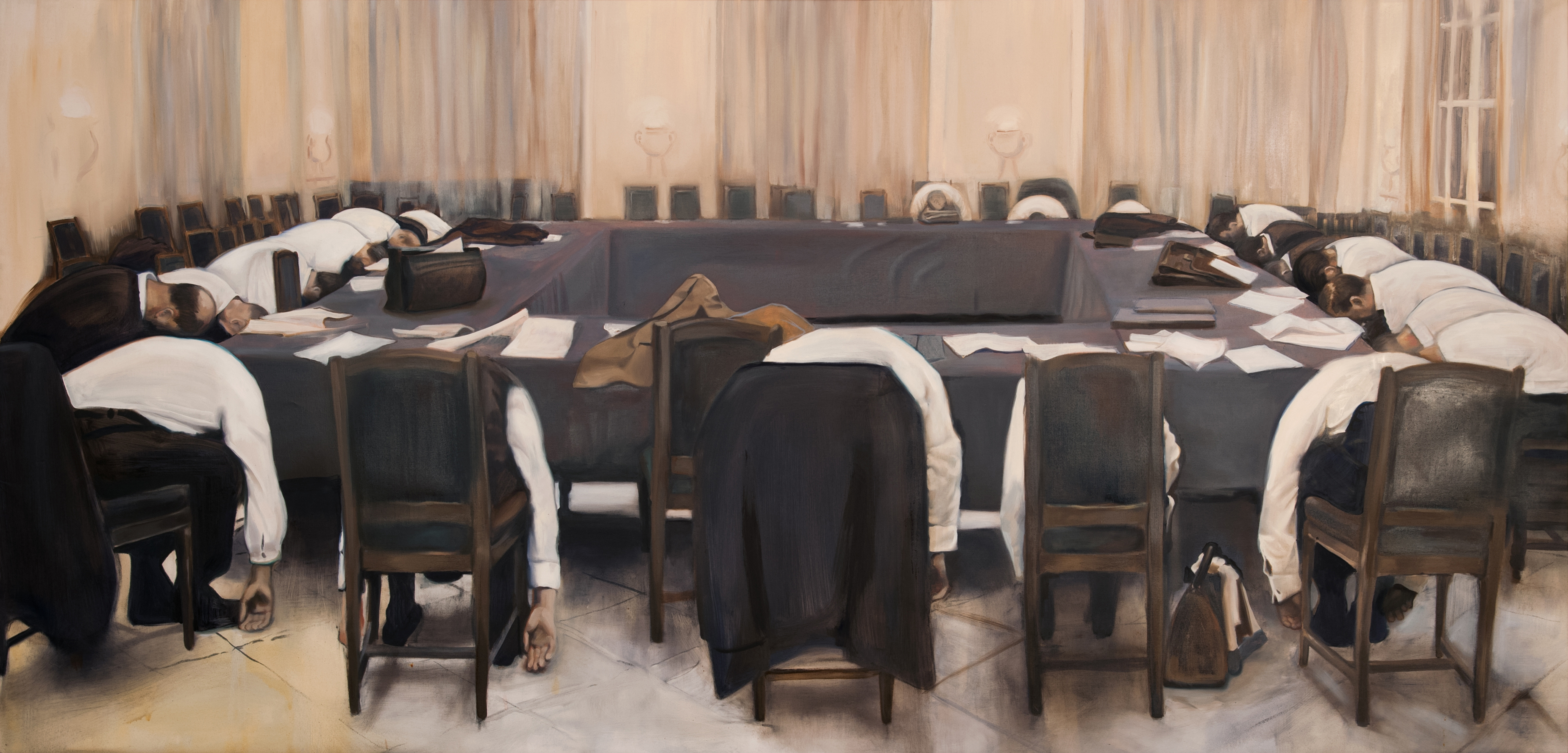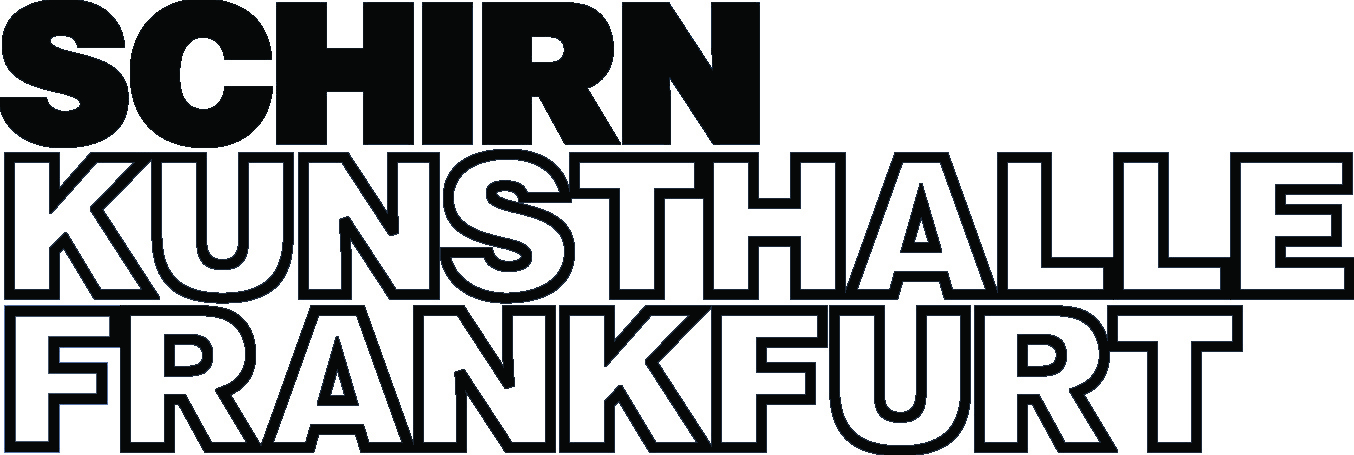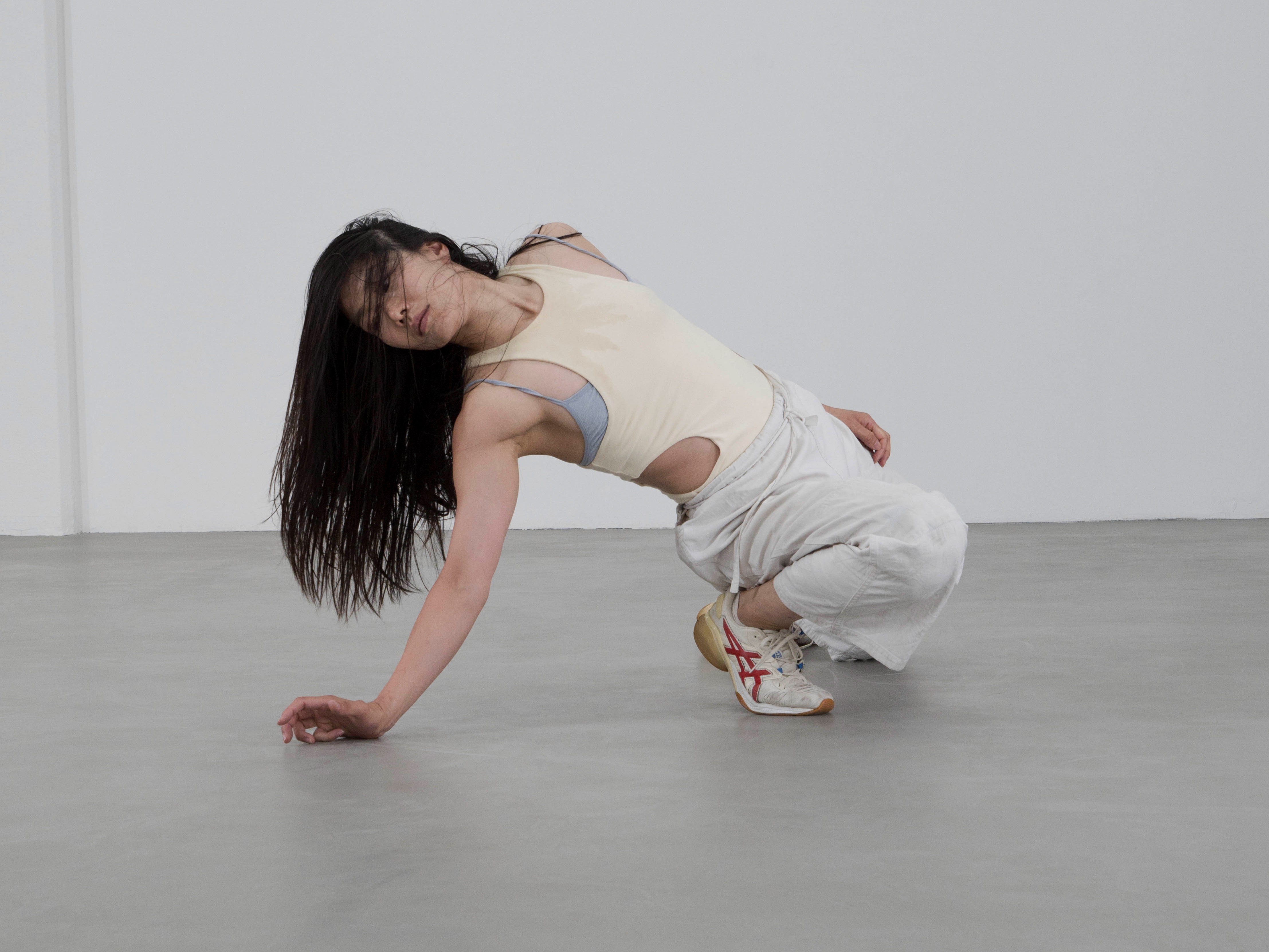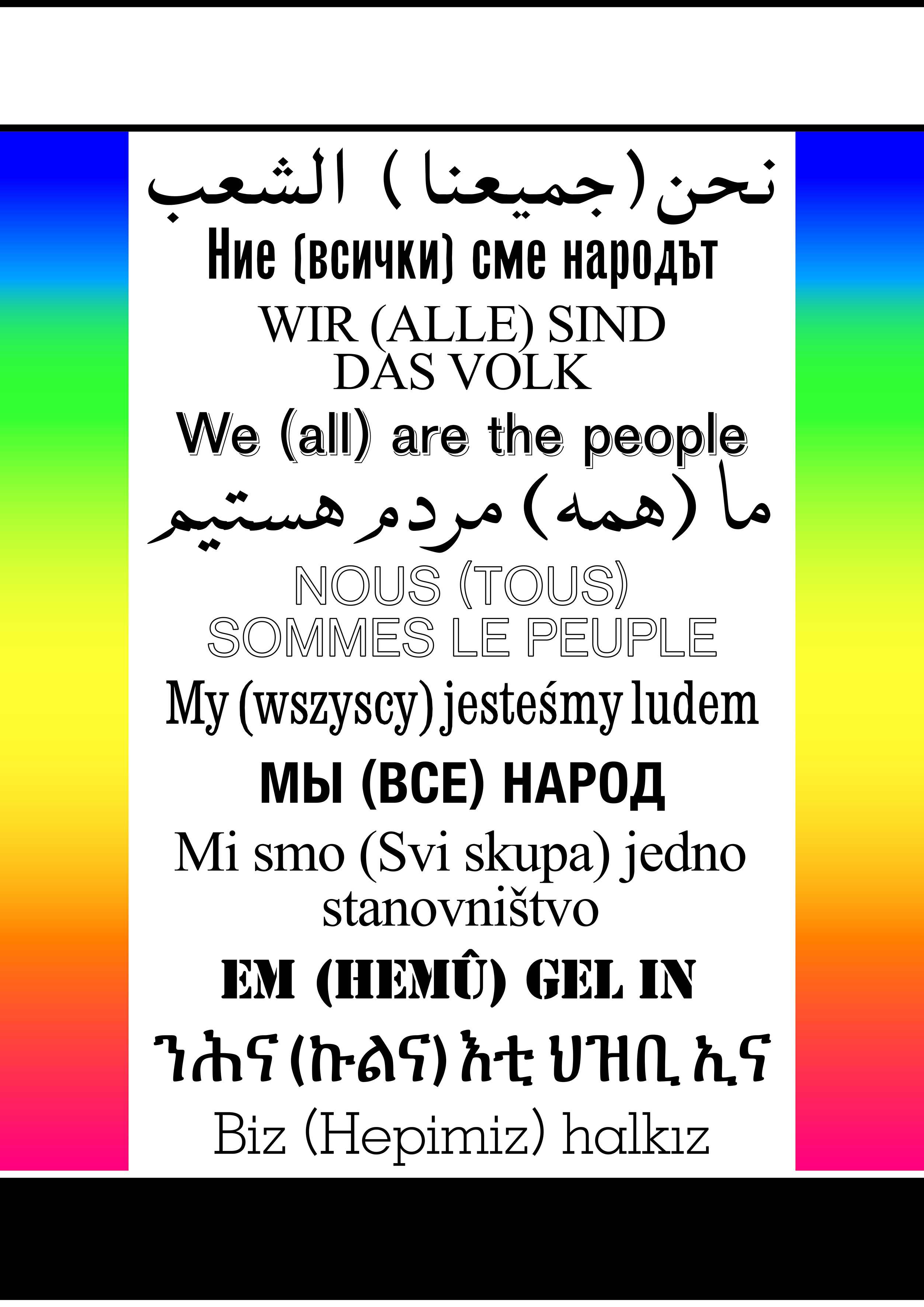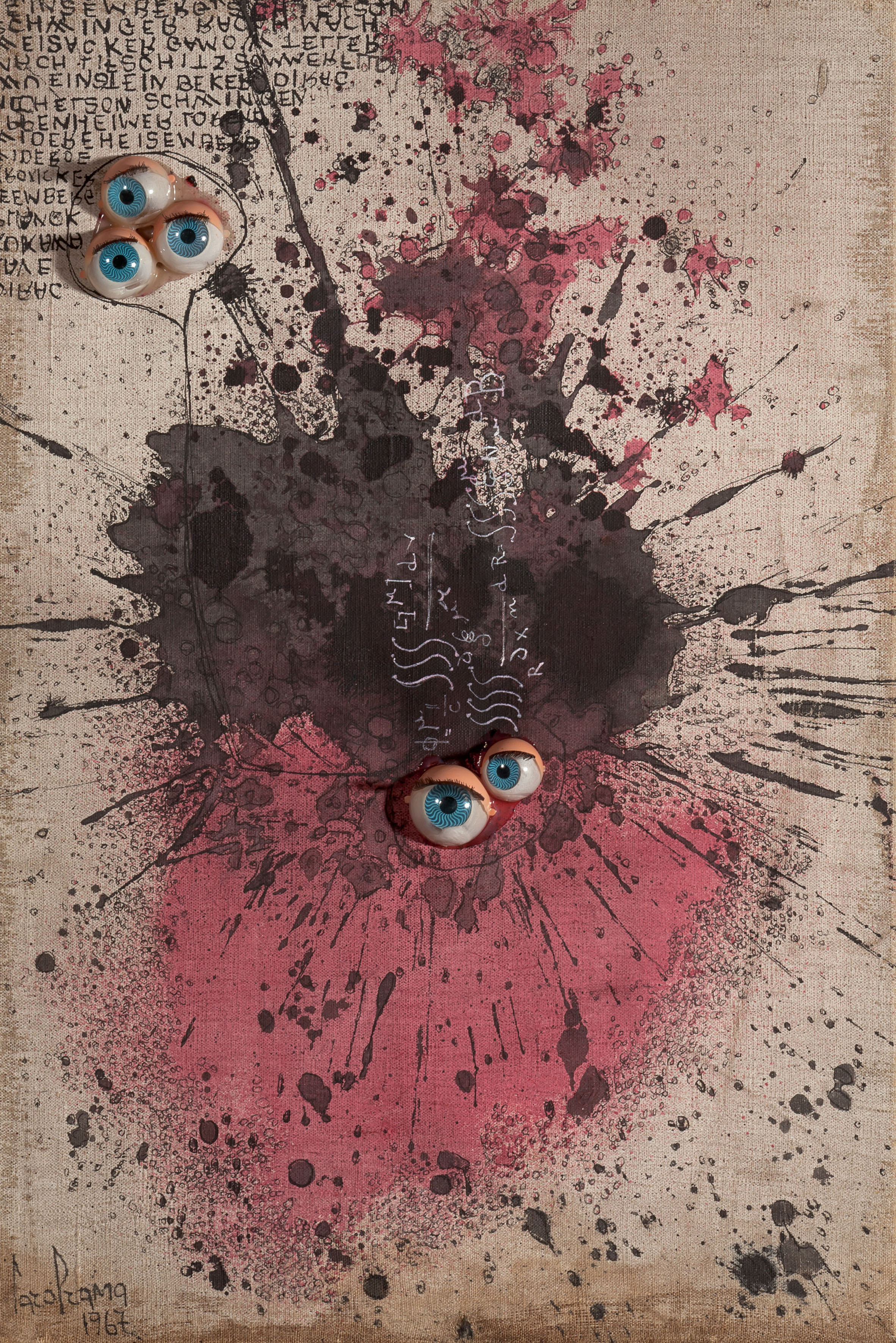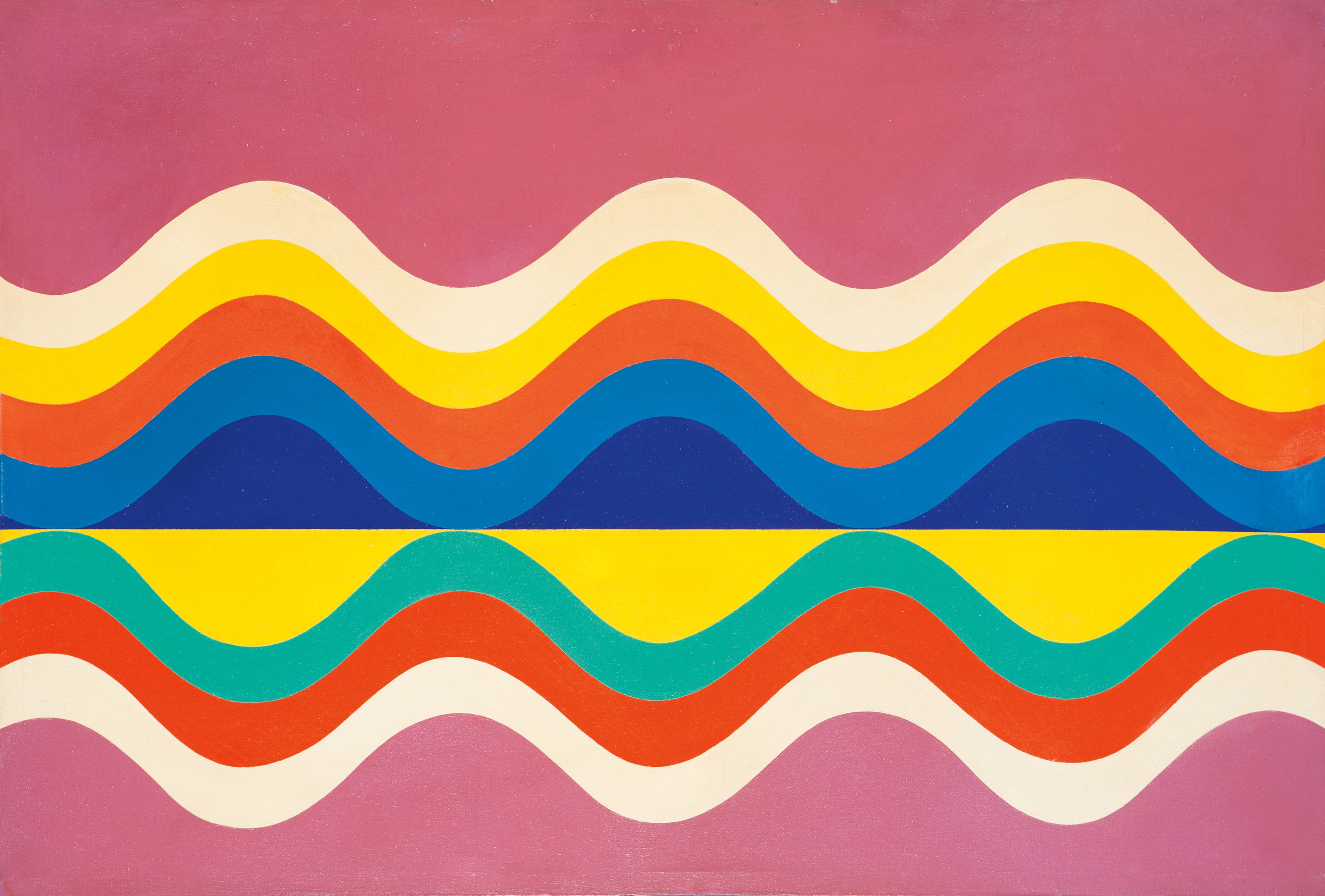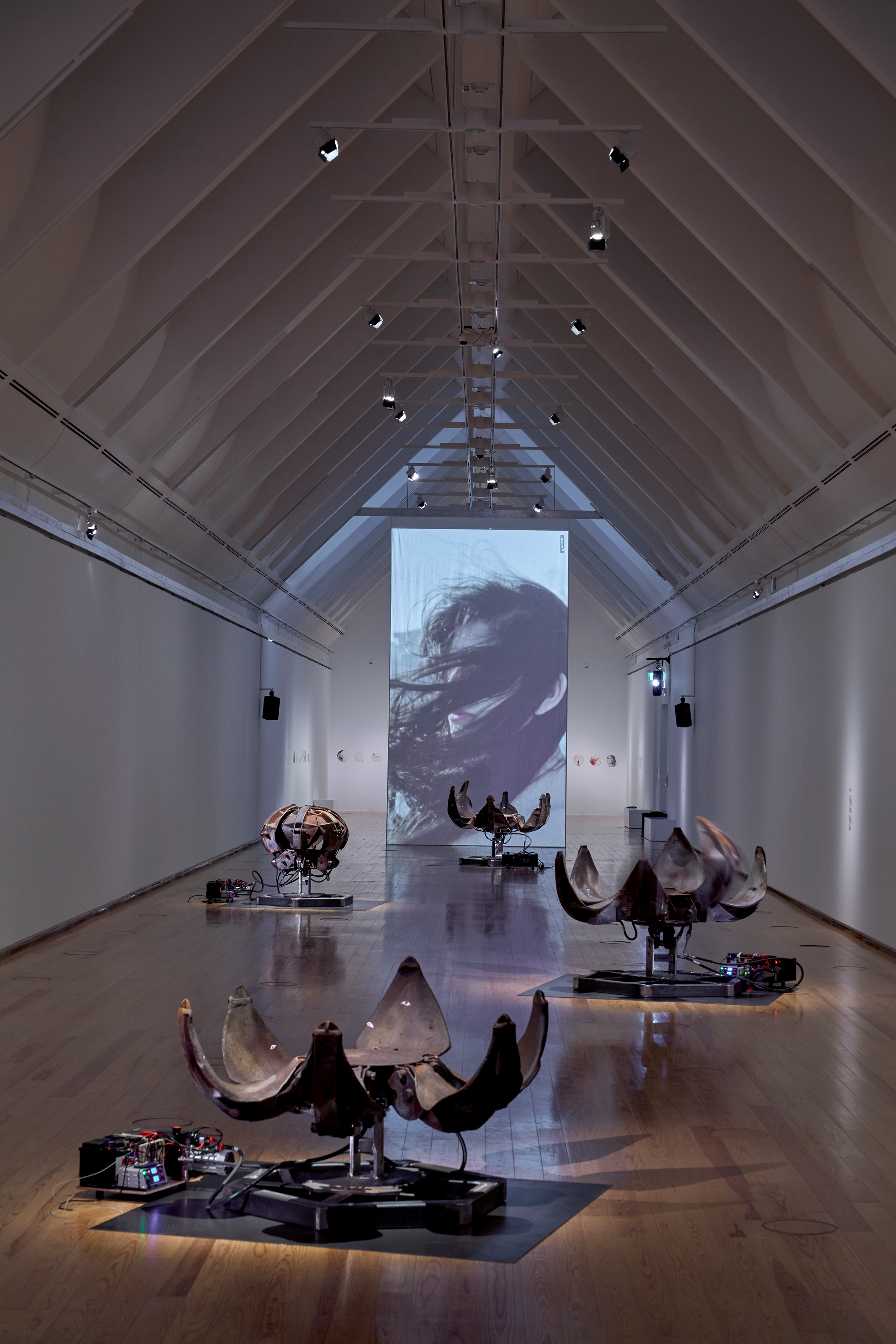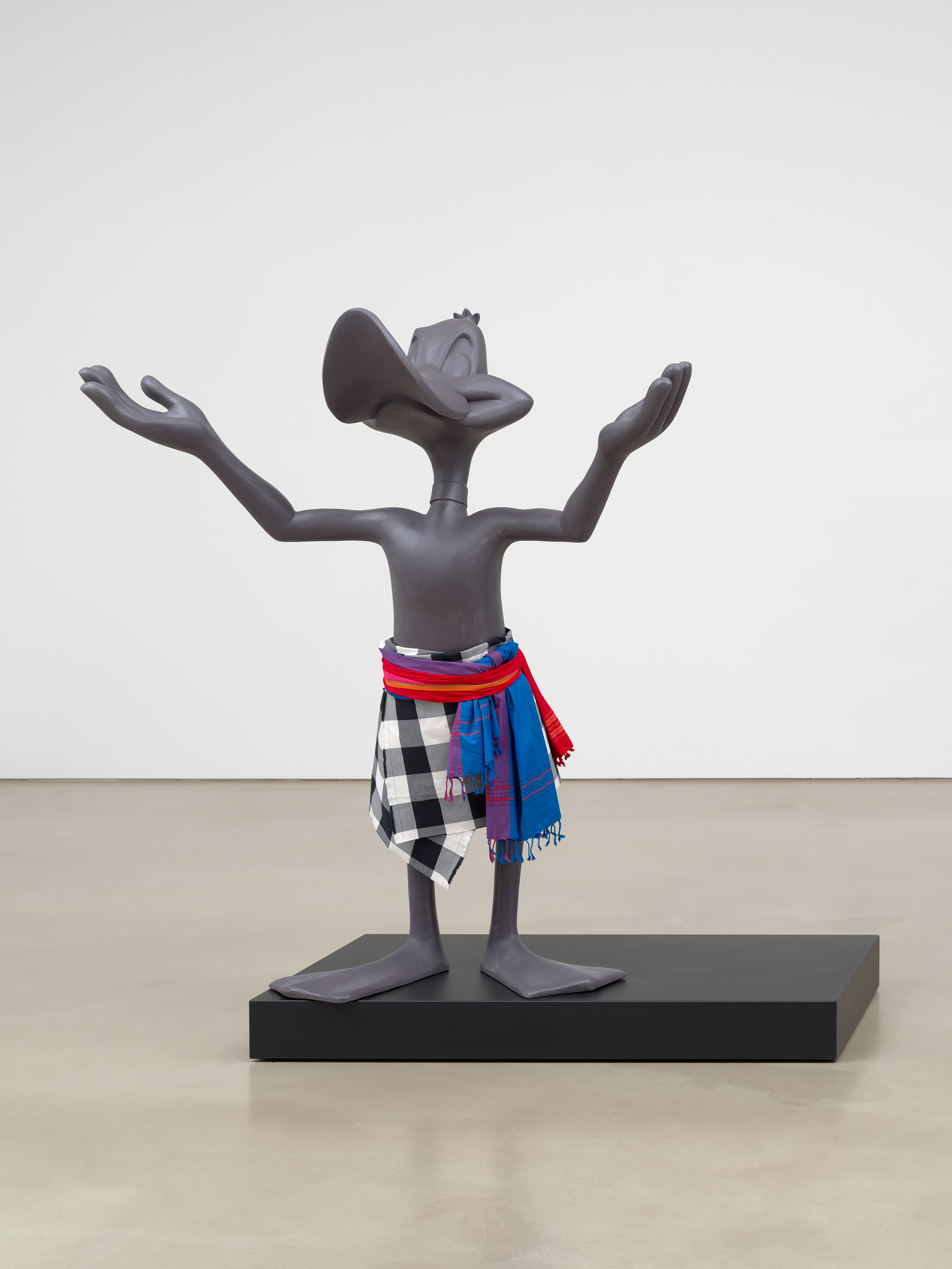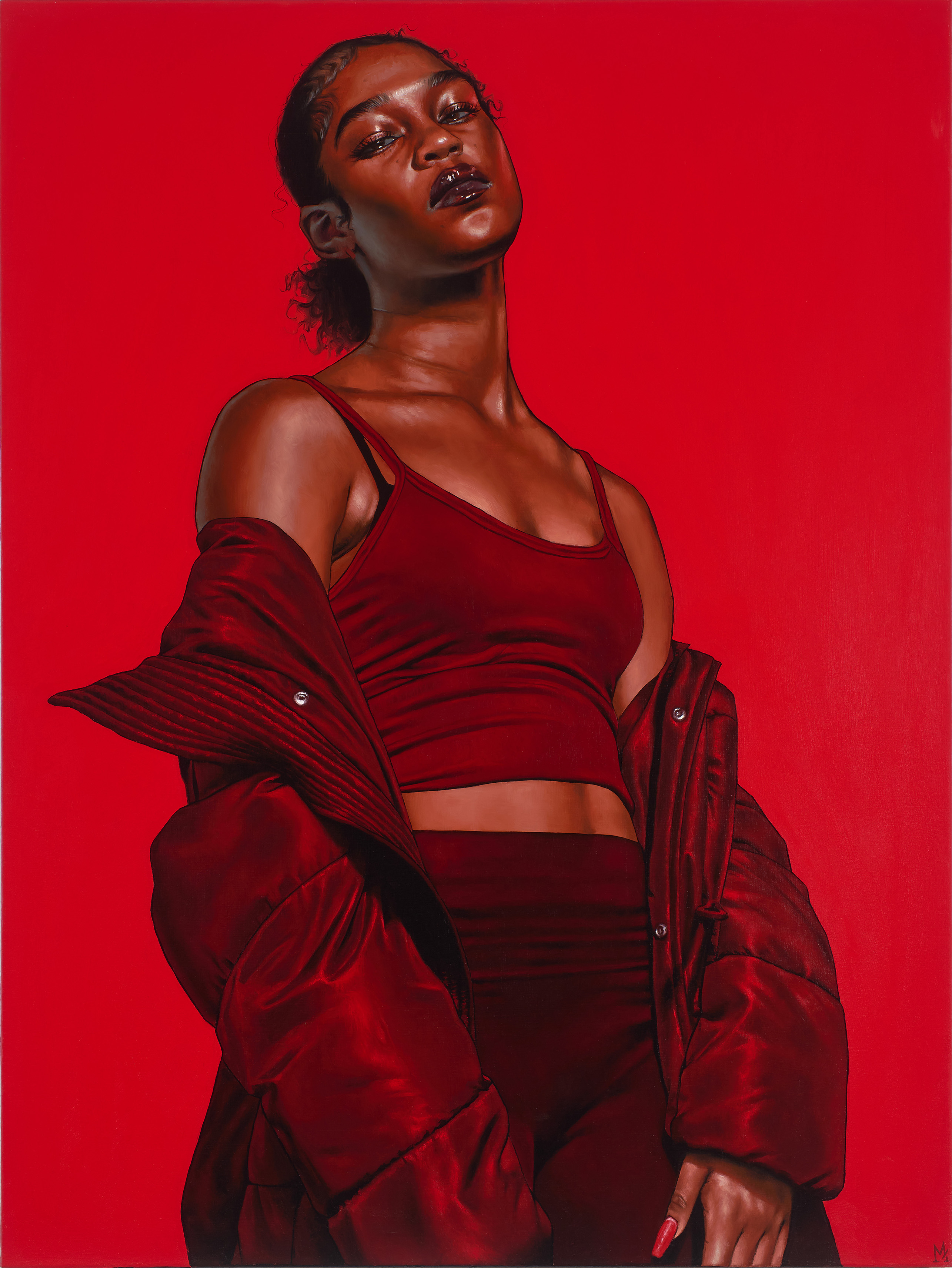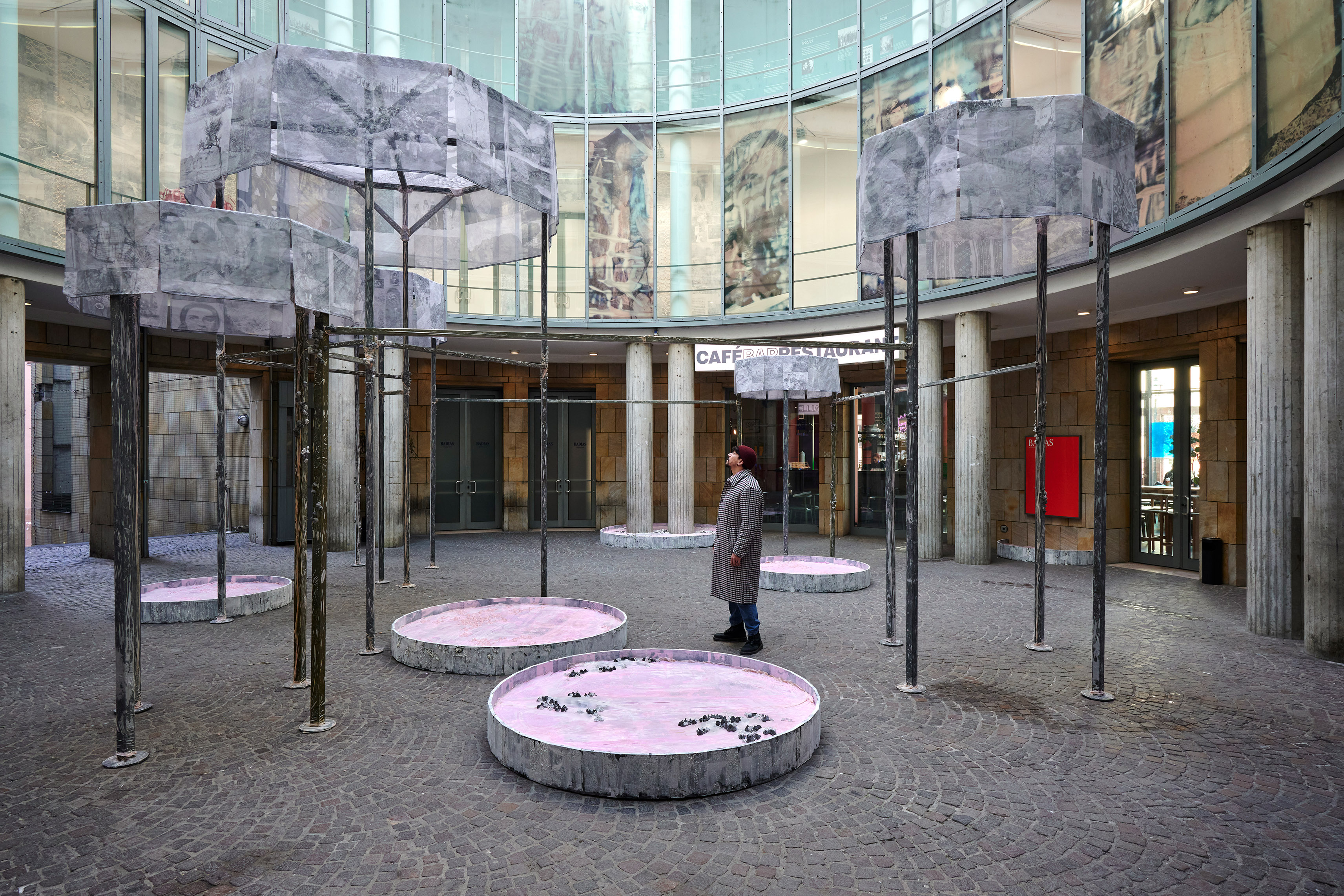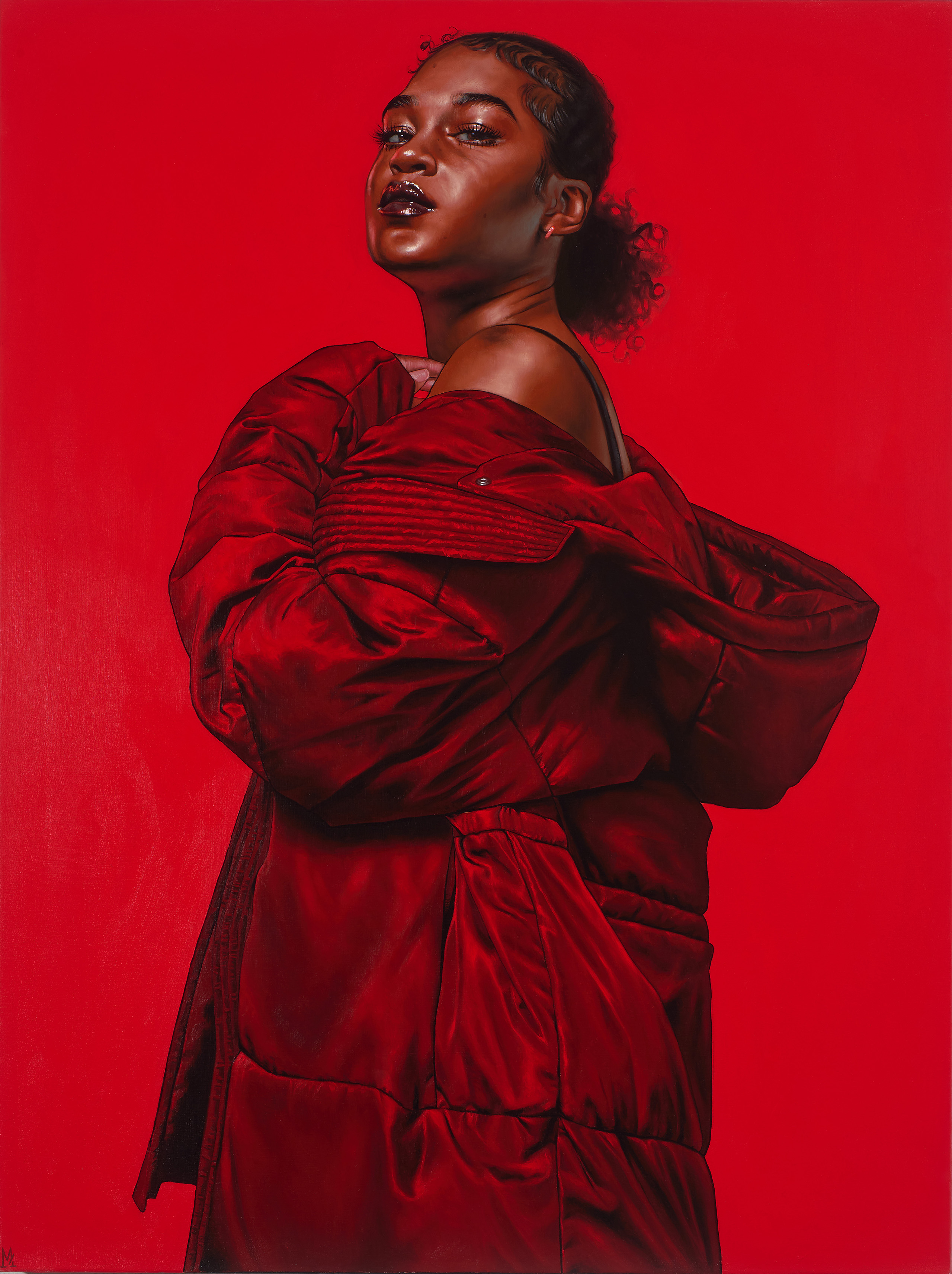March 21–May 27, 2018
Frankfurt am Main 60311
Germany
T +49 69 2998820
welcome@schirn.de
www.schirn-mag.com
Facebook / Twitter / YouTube / Instagram / Pinterest / #PowerToThePeople / #Schirn
The Schirn Kunsthalle Frankfurt is presenting an extensive exhibition on the political art of the present day. Based on a wide variety of different media, such as installations, photography, drawing, painting, and film, Power to the People. Political Art Now takes stock of contemporary positions that can be read as seismographs of political activity.
Democracy appears to be in crisis, the era of post-democracy has already dawned. The symptoms are manifold: populist leaders, fake news, autocratic backlash, totalitarian propaganda, and neoliberalism. For some time, however, society has also been experiencing the path of the art’s return to the political—a re-politicization is palpable. Images of demonstrations in the media have shaped public perception in recent years: waving flags, posters, or banners on streets and squares, at the Women’s March, in anti-Brexit campaigns, or in Occupy actions. There have been renewed waves of protest relating to very diverse contexts, countries, and political systems. This has affected artists as well. They create works that they regard as instruments of critique and explicitly motivated by politics.
Dr. Philipp Demandt, Director of the Schirn Kunsthalle Frankfurt, about the exhibition: “Recently, we have experienced art’s return to the political. The artists appear as seismographs in these politically eventful times. The exhibition Power to the People. Political Art Now also touches on the question of how political art is permitted to or should be. This is a question that we have to ask again and again at all times.”
The exhibition focuses on fundamental questions and examinations of the phenomena of and potential for political involvement. Stances are called into question, forms of protest depicted, and new stages of de-democratization considered. In doing so, the mechanisms and logic of political participation are addressed, even beyond concrete concerns. Through bringing together artistic positions from all manner of countries—from Germany, England, Belgium, and the United States to Turkey, Israel, or Libya—it hence encourages reflection not least on what political participation can look like and the consequences it entails in each case.
Dr. Martina Weinhart, curator of the exhibition, explains: “There is no art without society. Art always has a social component; it takes place within a context, at a particular time, in a particular country. Art has specific individuals who produce it; it has institutions where it is presented as well as specific viewers. At the same time, the particular strength of art is that it is clearly not a political party organ, but instead has access to its own specific means. The fact that it can open up spaces to think, spaces of experience that make it possible for it to deal more freely with complex contexts beyond daily politics."
The Schirn brings together 43 works, including artworks by, for instance Guillaume Bijl, Adelita Husni-Bey, or Ricarda Roggan, who take a critical look at the fragility of popular representation, the breakdown of public institutions, and the limits of parliamentary democracy. The works of Halil Altındere, Osman Bozkurt, or Ahmet Öğüt deal with structural inequality, state oppression and arbitrariness, but also with public protest as a form of political participation. The active involvement of citizens in designing public life is, for instance, addressed in the works of Katie Holten, Rirkrit Tiravanija, or Nasan Tur—while the spectrum of artistic forms of resistance is shown in the works of Phyllida Barlow, Hiwa K, or Marinella Senatore. Works such as those by Jens Ullrich examine the poster as a medium of political protest, while artists such as Julius von Bismarck or Mark Flood deal with the manipulability of media images and new, primarily medial forms of political participation and production of opinion. The collective Forensic Architecture or Andrea Bowers merge artistic methods and activism in their works and pose the question of art as a politically productive force.
All the artists in the exhibition: Halil Altındere, Phyllida Barlow, Guillaume Bijl, Julius von Bismarck, Andrea Bowers, Osman Bozkurt, Tobias Donat, Sam Durant, Omer Fast, Mark Flood, Forensic Architecture, Dani Gal, Katie Holten, Adelita Husni-Bey, Hiwa K, Edgar Leciejewski, Jonathan Monk, Ahmet Öğüt, Ricarda Roggan, Marinella Senatore, Rirkrit Tiravanija, Nasan Tur, Jens Ullrich
The exhibition Power to the People. Political Art Now is supported by the Verein der Freunde der Schirn Kunsthalle e. V.
On the occasion of the exhibition a newspaper edited by Martina Weinhart has been published, including a foreword by Philipp Demandt as well as an essay by Martina Weinhart and work texts, interviews with and statements by the participating artists.
Director: Dr. Philipp Demandt
Curator: Dr. Martina Weinhart
Press contact: Pamela Rohde (Head of Press/Public Relations):
presse@schirn.de / T (+49 69) 29 98 82 148
Press material: www.schirn.de/en/ (texts, images, and films for download under PRESS)
